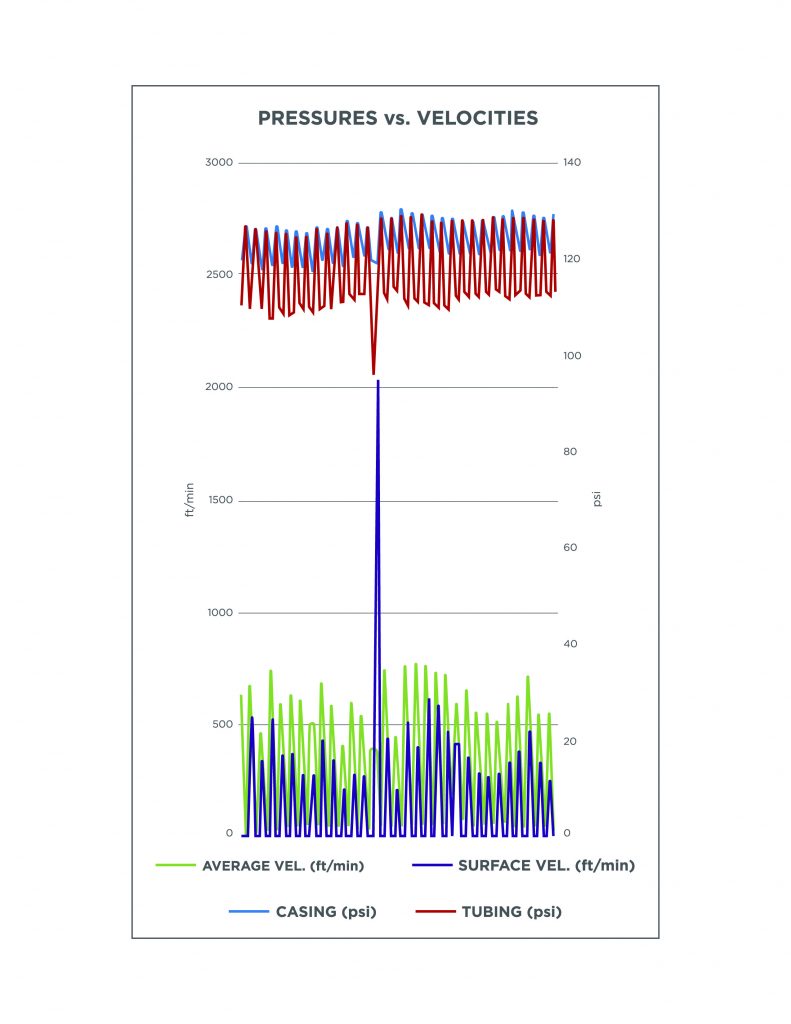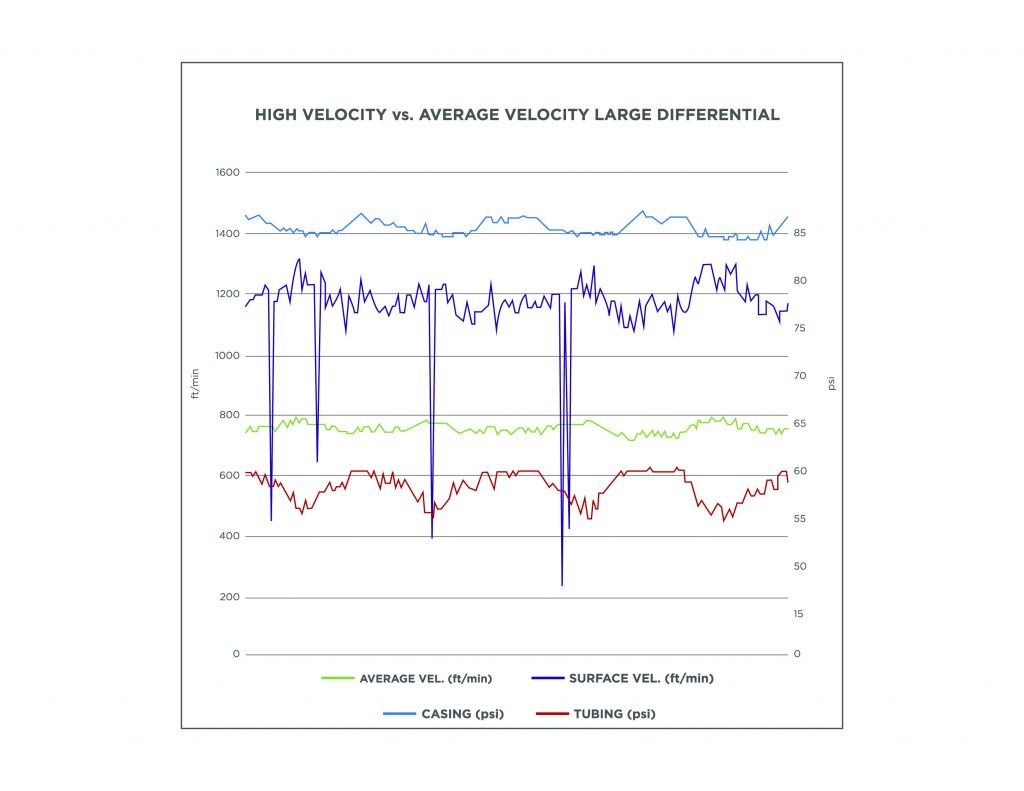By Mark Scantlebury
The introduction of kinetic energy for plunger lift
The plunger lift industry has been mostly unregulated to date, leading to installation of equipment that is unreliable and unsafe on plunger lift wells across the continent. Well head surface equipment routinely takes heavy impacts from plungers, leading to failures that can result in spills or injuries. Because of this, there has been a push from industry to come up with a common set of standards that helps to provide some regulation for plunger lift equipment.
A new specification from the American Petroleum Institute (API), 11 PL is emerging in plunger lift, covering plunger lift lubricators and related equipment. Operators and equipment manufacturers have collaborated over the last few years to create a common set of standards for the plunger lift industry to help identify quality manufacturers who properly design, construct, and test plunger lift equipment for reliable, safe operation.
One of the main outputs of this new standard is the requirement for manufacturers to provide a kinetic energy (KE) rating for their lubricator and spring combinations. This rating helps to identify the magnitude of impacts their equipment can take and allows the control system to compare real time kinetic energy measurements. Kinetic energy allows us to measure, track, and react to real impacts at surface instead of relying on velocity or over engineering of equipment to ensure safe and reliable operation of a plunger lift well.
The kinetic energy of an arriving plunger can be calculated using the mass and velocity of the plunger.
The mass of the plunger is already specified by plunger manufacturers leaving us to measure velocity at surface in real time in order to calculate the kinetic energy of each plunger arrival. Historically, operators have been content to rely on average velocity of a plunger, which is calculated from the well depth and the time for the plunger to rise. This is not nearly accurate enough to be used for the kinetic energy calculation as it does not account for acceleration or deceleration and whether the plunger started at bottom of the well or not.
The advent of plunger surface velocity
The Sasquatch plunger velocity sensor is a new innovation from Extreme Telematics Corp. (ETC) that uses Geomagnetic Sensing Technology™ to measure, store, and relay the plunger arrival and the surface velocity of the plunger. This gives an accurate velocity of the plunger in real time just before it strikes the anvil inside the lubricator at surface.
Geomagnetic Sensing Technology™ was first implemented in the Cyclops plunger arrival sensor. Instead of using an electromagnetic coil to sense the plunger, the Cyclops uses a magnetometer or magnetic eye that monitors the magnetic field of the earth. The movement of any ferrous object causes the magnetic field to change. These changes are compared to a threshold, which when exceed is used to signal the arrival of the plunger. This fundamental shift in plunger detection technology eliminated missed arrivals and false detections and led to the Cyclops becoming the number one sensor in the world for plunger arrival detection.
The increased accuracy of the plunger arrival using this technology allowed for the creation of the Sasquatch. The Sasquatch uses multiple sensors and interprets the changes in the magnetic field to give a measured velocity of the plunger as it passes the sensor. This velocity is logged internally and made available via Modbus to a connected control system. An external dry contact switch is closed, just as with the Cyclops, signalling that a new arrival was detected and that a velocity value is available. The algorithm to measure plunger surface velocity and its use resulted in a patent, US 9,587,479 B2 “VELOCITY SENSOR FOR A PLUNGER LIFT SYSTEM”, being granted in March 2017.
Using plunger surface velocity and kinetic energy
Using a real time plunger control system, such as the ALiEn2 Expert plunger lift controller, the surface velocity and mass of the plunger are used to calculate the kinetic energy of each plunger arrival. This can be compared to a user defined threshold to determine if operation should be halted. In ETC controllers, the user can specify both a hard hit and dangerous hit threshold. The controller watches for a specified number of consecutive hard hits and will automatically shut down operation of the plunger well to protect equipment. If a plunger arrives that exceeds the dangerous hit threshold, the operation of the well will be stopped immediately to allow the operator to inspect the equipment before continuing.
During testing of the Sasquatch with a well-known producer in the San Juan Basin, some startling results were recorded. In one instance a well was routinely vented when the plunger did not arrive. The long wait time for the arrival led to a low velocity being calculated (400 ft/min). This meant that the 7.5 lb plunger appeared to be travelling with 7.02 J of energy. The Sasquatch was able to show that the plunger was in fact arriving at a much higher velocity (2025 ft/min).
The real kinetic energy was in fact 180 J or 25 times more energy than expected. This was happening because the venting of the well removed the back pressure, causing the plunger to accelerate rapidly.
On another well in the same area, the plunger was being optimized to an average velocity of 750 ft/min. When examining the plunger surface velocity, we could see that the 9 lb plunger was consistently arriving closer to 1200 ft/min.
This meant that the actual kinetic energy of 76 J was substantially higher than the estimated 30 J. This may not sound like a lot, but over 6 months, the spring was absorbing 200 kJ of energy. This will likely lead to premature spring wear resulting in a failure.
In a third case in Canada, an operator was reporting repetitive failures of their springs and plungers. Upon installing the Sasquatch, we found that the plunger was arriving at a velocity of 5623 ft/min as opposed to the average calculated velocity of 820 ft/min.
At 10 lbs, this plunger was arriving with 1853 J of energy and was able to collapse the spring in a single arrival.
Where are we headed next?
With the advent of both plunger surface velocity and kinetic energy of plunger arrivals, a once stagnant industry is set to go through a revolution. Using kinetic energy for safety is simply the first step. The availability of these new operational parameters has sparked numerous discussions throughout the industry. As producers, service companies, and technology providers analyze surface velocity data, new algorithms are being generated and tested to enhance production. As well, the kinetic energy of these arrivals is being used for predictive maintenance of plungers and well head equipment.
ETC is one of these technology providers that is working with a number of plunger well operators to refine a predictive maintenance model for spring wear. This model takes the cumulative kinetic energy of each plunger arrival and uses it to predict when a spring will fail. The goal of this technology is to reduce the number of physical inspections, while reducing the amount of premature replacements. Currently, most operators either replace their springs on a schedule, causing issues when springs fail early, but also replacing springs that may last for longer periods of time. Many other operators simply run their springs to failure, leaving the opportunity for catastrophic failures that could be easily prevented.
About ETC
EXTREME TELEMATICS CORP.
5925 – 12th Street SE, Bay 14
Calgary, Alberta T2H 2M3
Phone: (403) 290-6300
Email: info@etcorp.ca
Share This:





 CDN NEWS |
CDN NEWS |  US NEWS
US NEWS 



































Canada’s Advantage as the World’s Demand for Plastic Continues to Grow